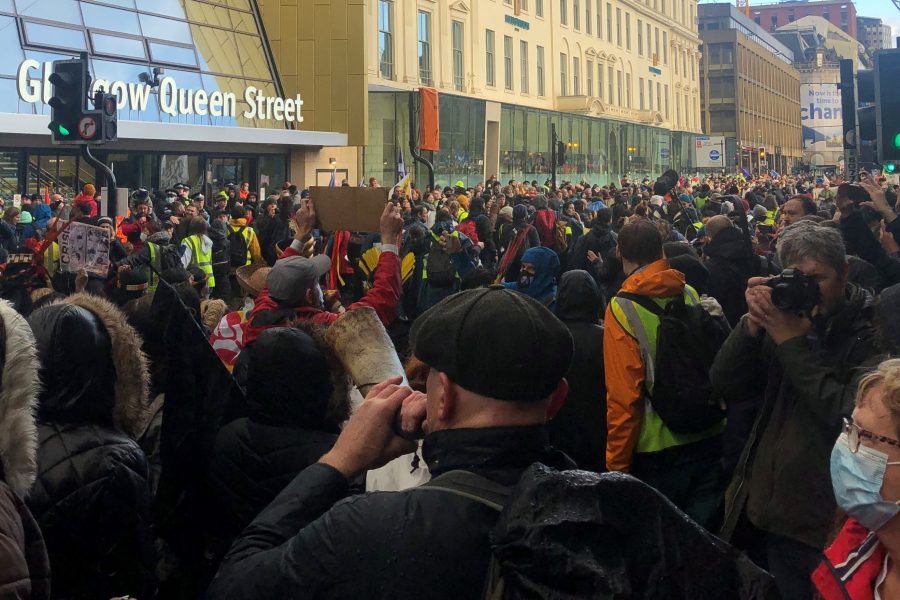
Volunteering at COP26 in Glasgow
23 November 2021
Discussion highlights: Chair and Students Roundtable #2
24 November 2021By Lola Vallejo
COP26 is only the 5th COP I attend, which makes me a rookie by Steven Guilbeault’s standards (who has gone from activist to Canadian climate minister in less than 20 years). This one felt noticeably different.
This was the first, and sadly probably not the last, COP held during the Covid-19 pandemic. While the Chinese Presidency of the CBD postponed COP15 a second time, the UK presidency had a tough gig to balance out health and safety concerns with the urgent need for a high-level political moment. Crucially, COPs derive their legitimacy from their inclusiveness, so access mattered a lot.
All delegates entering the Blue Zone were asked to take a LFD test and register their result online prior to entering the building. This was a minor inconvenience compared with many delegates’ anxiety regarding the entry requirements (visa, vaccination) and sky-high accommodation costs prior to COP26, veering on anger from Latin American representatives inexplicably on a travel “red list”. Overall, I had never seen so many people decide on their attendance , or events being confirmed, a mere *days* before the actual conference.
This is a useful reminder that the COP presidency is not just an opportunity for strategic diplomacy, but also requires at a basic level a capacity to “host” meaningful discussions in good conditions. The Presidency received some flack for failing to provide adequate seating space, charging points for electronics and good enough food. This allowed attendees to appreciate all the more the feat achieved by Spain in 2019 when it volunteered to co-host COP25 in Madrid, to support Chile embroiled in social justice protests, just a month before the conference starting date.
This COP also felt different because it felt bigger. With nearly 40,000 registered participants (twice as much as last year, and 10,000 more than in Paris) it *was* the largest by a mile. COPs are usually schizophrenic affairs, split between negotiation halls filled with officials in suits in the Blue Zone, and a “climate trade fair” involving countries, institutions, companies and media elbowing each other for attention in the Green Zone, or in the Blue Zone’s “pavilions”.
In Glasgow, the “trade fair” part, and the pace of announcements (statements or coalitions, many engineered by the UK presidency for months prior to COP) was more frantic than in the previous years, leaving everyone slightly disoriented. What was wheat and what was chaff? It was a fantastic collective effort from researchers and journalists, to unpick the two in real time, and start taking stock of their impact, in parallel to following the negotiations. This effort will of course need to continue in the coming months and years: accountability will become much more central as COPs style themselves as forums geared less towards defining rules, and more towards spurring action.
COP26 was, as was the case in previous COPs, punctuated by activists’ marches outside or ‘happenings’ inside. NGOs also award of the “Fossil of the Day” to the worst blocker on climate action, and deliver day-to-day takes on what is going on (Climate Action Network’s ECO newsletter), alongside the more neutral IISD Earth Negotiations Bulletin. COPs can be seen as “bla bla bla”, but having discussed the place given to NGOs and observers in the formal process with colleagues working on negotiations related to other environmental issues, this relative openness to civil society is a key feature to preserve for COP27 scheduled in Sharm-el-Sheikh.


